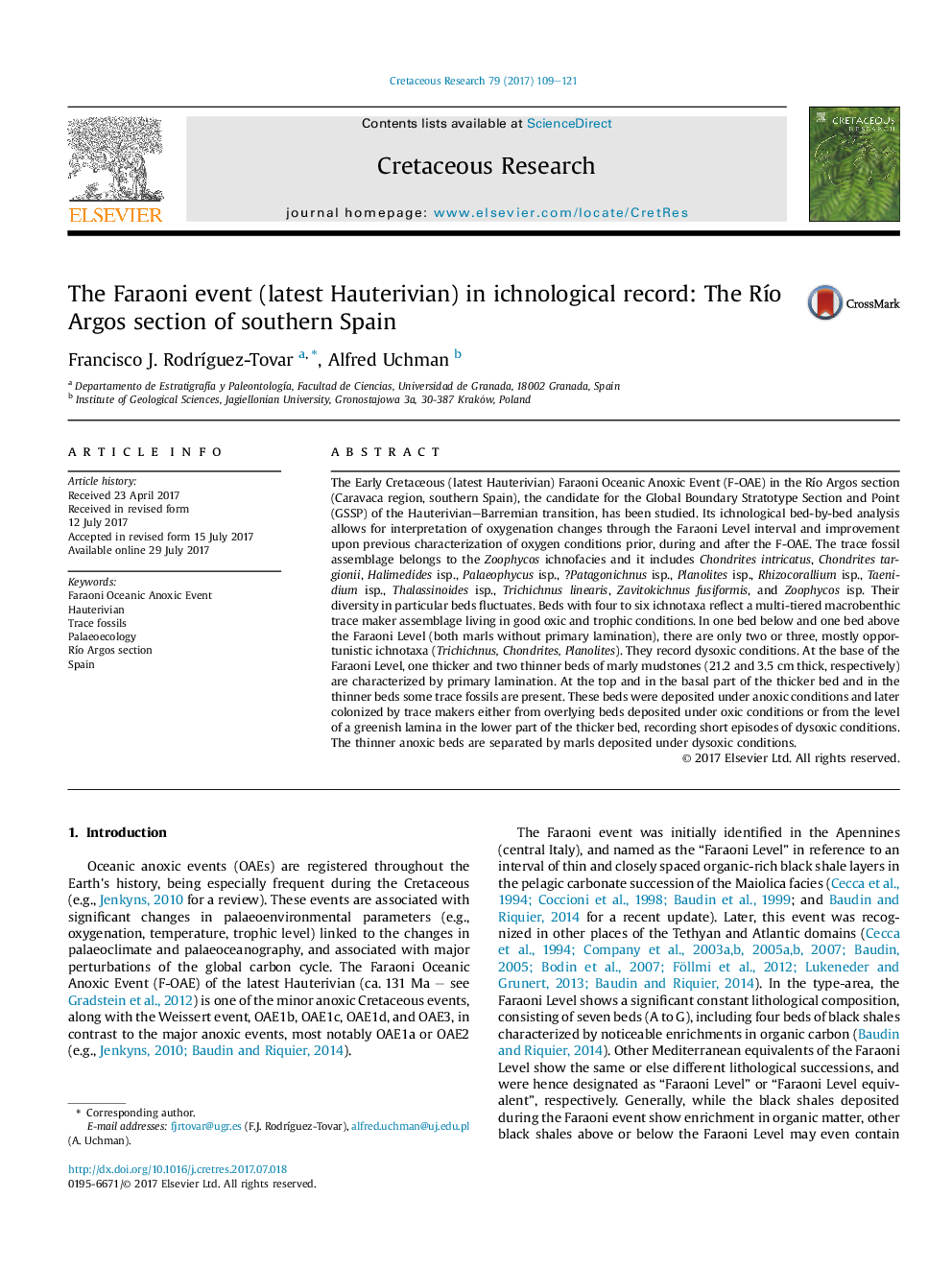| کد مقاله | کد نشریه | سال انتشار | مقاله انگلیسی | نسخه تمام متن |
|---|---|---|---|---|
| 5787988 | 1642044 | 2017 | 13 صفحه PDF | دانلود رایگان |

- Ichnological analysis of the Faraoni Oceanic Anoxic Event is conducted.
- Trace fossil composition is relatively uniform in the studied interval.
- Prevalent good environmental conditions (oxic conditions and food) are interpreted.
- Local decreasing in diversity below and above the Faraoni Level reveals dysoxia.
- Absence of traces in laminated beds at the base of the Faraoni Level indicates anoxia.
The Early Cretaceous (latest Hauterivian) Faraoni Oceanic Anoxic Event (F-OAE) in the RÃo Argos section (Caravaca region, southern Spain), the candidate for the Global Boundary Stratotype Section and Point (GSSP) of the Hauterivian-Barremian transition, has been studied. Its ichnological bed-by-bed analysis allows for interpretation of oxygenation changes through the Faraoni Level interval and improvement upon previous characterization of oxygen conditions prior, during and after the F-OAE. The trace fossil assemblage belongs to the Zoophycos ichnofacies and it includes Chondrites intricatus, Chondrites targionii, Halimedides isp., Palaeophycus isp., ?Patagonichnus isp., Planolites isp., Rhizocorallium isp., Taenidium isp., Thalassinoides isp., Trichichnus linearis, Zavitokichnus fusiformis, and Zoophycos isp. Their diversity in particular beds fluctuates. Beds with four to six ichnotaxa reflect a multi-tiered macrobenthic trace maker assemblage living in good oxic and trophic conditions. In one bed below and one bed above the Faraoni Level (both marls without primary lamination), there are only two or three, mostly opportunistic ichnotaxa (Trichichnus, Chondrites, Planolites). They record dysoxic conditions. At the base of the Faraoni Level, one thicker and two thinner beds of marly mudstones (21.2 and 3.5Â cm thick, respectively) are characterized by primary lamination. At the top and in the basal part of the thicker bed and in the thinner beds some trace fossils are present. These beds were deposited under anoxic conditions and later colonized by trace makers either from overlying beds deposited under oxic conditions or from the level of a greenish lamina in the lower part of the thicker bed, recording short episodes of dysoxic conditions. The thinner anoxic beds are separated by marls deposited under dysoxic conditions.
Journal: Cretaceous Research - Volume 79, November 2017, Pages 109-121